|
SHIP SHAPES AND BRISTOL FASHIONS
Stu's Christmas Cut-Price Culture Caper
I've never liked Bristol. Despite 15 years of having it as the nearest city, there's something profoundly unlovable about the place that's always frustrated my attempts to get along with it. Perhaps it's just a case of having been spoiled by spending the previous 23 years equidistant from the splendid modern metropoli of Edinburgh and Glasgow, but Bristol has always seemed drab, unfocused, ugly and soulless, no matter how many times I've determinedly lost myself in its maze of concrete streets hoping desperately to stumble across some hidden oasis of magic that would finally bestow some character on the city.
So when, one morning at the tail end of summer, the BBC's Breakfast News alerted your adventurous but impoverished reporter that The Civic Trust was about to launch its annual Doors Open Day - whereby the public can for a limited time enjoy many of the nation's cultural treasures free of charge - it seemed the perfect opportunity for one last try.

Olaf? Are you SURE we're not lost?
"Doors Open Day" is actually something of a misnomer, as the openings are usually spread out over several days, and by the time I'd seen the story on the Friday I'd already missed more than half of the attractions. But a dogged trawl through server-crippling traffic on the Trust's website eventually saw a map and itinerary drawn up for the following day.
One of Bristol's least-welcoming features is its poisonous hostility towards motor traffic, so I planned a route starting at Temple Meads railway station. One fortunate side effect of this strategy is that the scenery around the brutally functional iron-shed station (which replaced the beautiful original 19th-century terminal building designed by Isambard Kingdom Brunel) is unquestionably the most hideous to be found anywhere in the city's centre - which is, to be fair, no small feat given the plentiful and gruesome competition. After that, even the most underwhelming cultural sites were bound to be a transcendent joy by comparison.

The first thing you see when you step off the train at modern-day Temple Meads.
The nearest artefact of interest to the train station is the imposing, soot-blackened presence of the huge Gothic church at St Mary Redcliffe. (Which, incidentally, provides a lovely view if you should ever find yourself playing poker in the casino directly opposite, whose large card room has one side comprised entirely of windows for that very purpose.) However, as I walked past in the late-morning sunshine it was still closed, so I headed on along the canalside to the Bristol Industrial Museum at Princes Wharf. And just in time, as it turned out, since the museum was only seven weeks away from being closed down pending three years of Lottery-funded renovation work to turn it into a brand-new Museum Of Bristol.
(Apparently, "The aim is to enable everyone to find their own answer to the often asked question: ‘What makes Bristol, Bristol?'"
It's clearly to my unending shame that I have never once in 15 years of living here asked, or heard anyone ask, such a question. And if I had, I certainly wouldn't have put that inappropriate comma in the middle of it)

The barges give you an idea of the scale of the Industrial Museum.
To call the BIM "unpretentious" would be understating the situation to a fairly substantial degree. The museum, situated in what was formerly a commercial docks, is basically a series of huge hangars with exhibits - and the occasional plastic chair - plonked directly down onto the cold stone floors. The vast spaces, though, enable the display of (among other things) a veritable fleet of vehicles of all types, ranging from horse-drawn coaches and railway carriages to helicopters, small aircraft and even a replica of the front half of Bristol's most celebrated aeronautical achievement, the Concorde.
Your intrepid correspondent's been in a Concorde once before. Not, I should hasten to add, for a decadently-priced trip across the Atlantic, but on nice solid ground at the Imperial War Museum in Duxford near Cambridge. I went there during a slack afternoon in 1994 while working at Sensible Software, and alongside all the warplanes (including a rare intact example, now sadly sold, of the remarkable WW2 German rocket fighter the Me-163 Komet, which is about the size of a Smart car with stubby little wings) was a gleaming Concorde, sitting out on the runway and looking very graceful and splendid in the sunshine.
Curious to see how the other half lived, I climbed the stairway to the rear door and went inside, and was instantly seized with an unexpected and overpowering attack of terrifying claustrophobia. Rather than the elegant luxury you might anticipate, the interior of a Concorde is unbelievably small and cramped and dark and horrible, and I actually ran all the way to the other door so I could get out. I'm not a great fan of flying in general, but the thought of being squashed inside one of these skinny little steel tubes for three hours, with a hundred other people, five miles up in the sky, brings me out in a cold sweat to this day. As for the idea of paying several thousand pounds for the privilege - well, for the love of Jeebus, how quickly does anyone really need to get to New York?
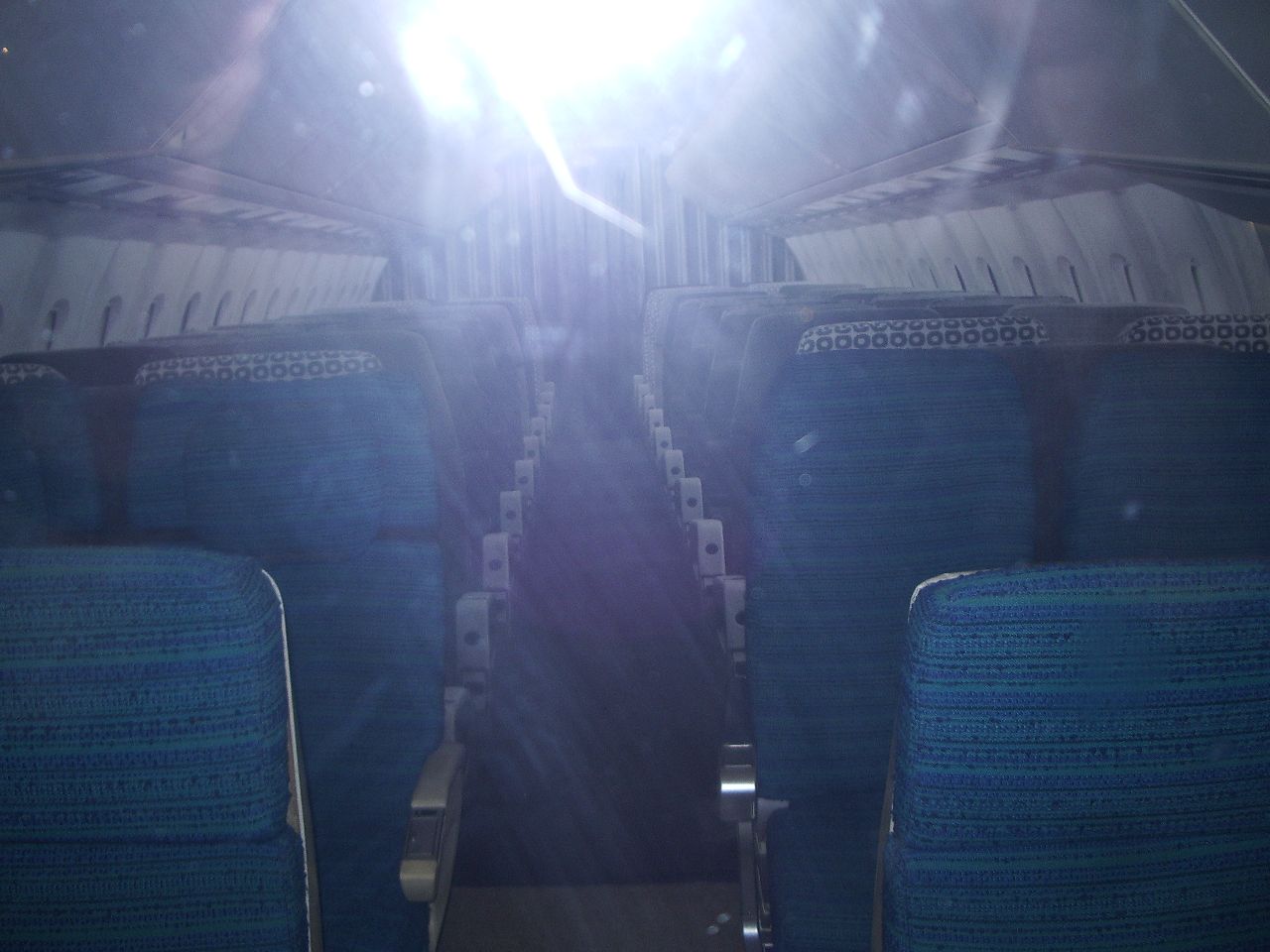
The Concorde
cabin was blocked off by a large Perspex panel, hence the flash glare.
Anyway, with the benefit of forewarning the Bristol Concorde was considerably less scary, and I ambled around the rest of the museum for an hour or so. The most powerful display, tucked away rather quietly behind room-dividers in a poorly-lit far corner, was the section dealing with the history of slavery. Bristol was the UK's biggest centre of the trade, and the city is still somewhat uncomfortably coming to terms with the legacy of its forefathers, so it'll be interesting to see if the new museum gives these chilling exhibits more prominence.
There's plenty to see outside the BIM too, with a few more exhibits lined up along the dockside beside some bizarre new executive housing developments (some of which seemed to be two-dimensional) eventually leading to the location of Brunel's mighty steamship the SS Great Britain. It wasn't part of Open Doors Day, however, so your cash-strapped correspondent turned back at the entrance to the visitor centre and, after much peering around in confusion, realised that the only way onwards to Bristol city centre was to retrace my steps almost all the way back to St Mary Redcliffe and head back into town from there.
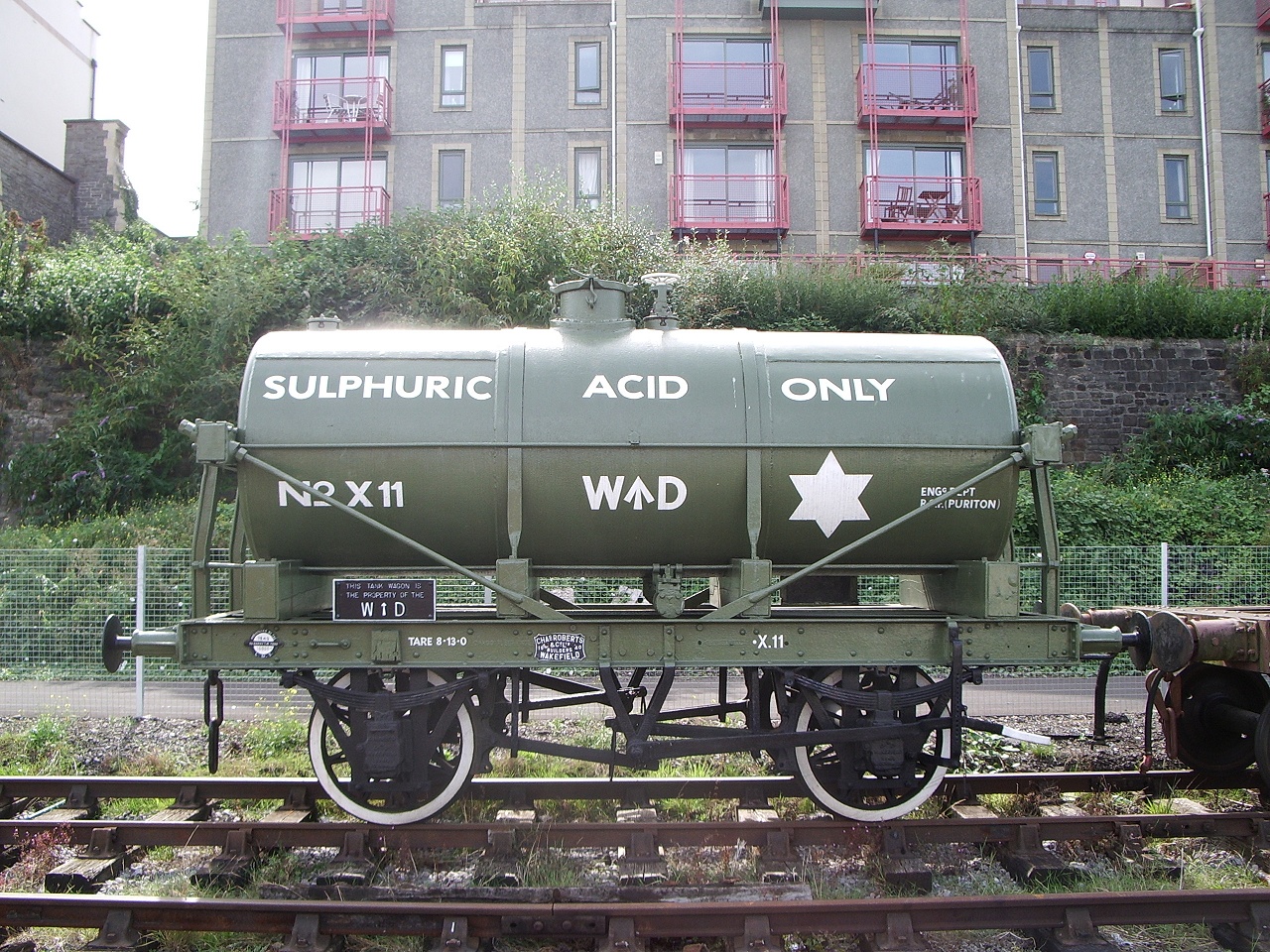
The WoS Calendar - maybe next year, eh?
The next stop on my schedule was Bristol Cathedral. Having never been very impressed with grand religious structures before, I had my mind changed around eight years ago by a chance visit to the magnificent cathedral in Durham - which remains my favourite building in the British Isles - so I was cautiously optimistic. The caution turned out to be well founded. Bristol's cathedral is a dismaying sight, architecturally epic but a gloomy, disorganised mess of random clutter and tat inside. Littered everywhere with pamphlets and brochures and stacks of plastic chairs, and generally furnished as if the interior had been blown up by the IRA the day before an important service in 1974 and restocked in a hurry from the nearest Oxfam shop, being within the church's walls sapped the spirit at an alarming rate, and I couldn't decide whether this was the intent of the people who built it or not.
It's easy to see how Middle Ages peasants living in thatched huts were deliberately cowed into meek subservience by the awesome scale of such institutions, yet at the same time the older, smaller Durham Cathedral shows how uplifting and majestic such buildings could be. The disharmonious chaos inside made it impossible to tell whether it was the architects or the current curators who were at fault, and I scurried for the door without pondering it..

Someone was certainly indecently pleased the day poor young
Frank bought the farm.
My bag suddenly felt heavy on my shoulder as I trudged glumly in the baking sun towards the Colston Hall, but the splendid 19th Century concert venue had some invigorating surprises in store. I'd gone along chiefly on the promise of the backstage areas, including the copious underground vaults, being open to the public, but on arriving in the main hall there turned out to be some kind of unbilled art installation on display, and very fine it was too.
The auditorium was in darkness, with various little enclosed cubicles with one side open scattered around the stalls area. Each contained a landscape image, lit from behind to striking effect, some made to be viewed through a peephole cut in the canvas, and in some a side wall also featured a piece of poetry, printed intriguingly in dark but reflective text which was almost invisible until revealed by the flash from the camera, only to be properly read later, which added to the air of separation which characterised the whole installation.
The exhibition had an still, wintry ambience quite at odds with the noisy summer world outside, the isolation of each image in the darkness making it feel like a window into another dimension, and I wandered around it captivated for quite a while before retiring to the balcony to sit in a comfy seat and watch the hushed, bemused reactions of fellow visitors.
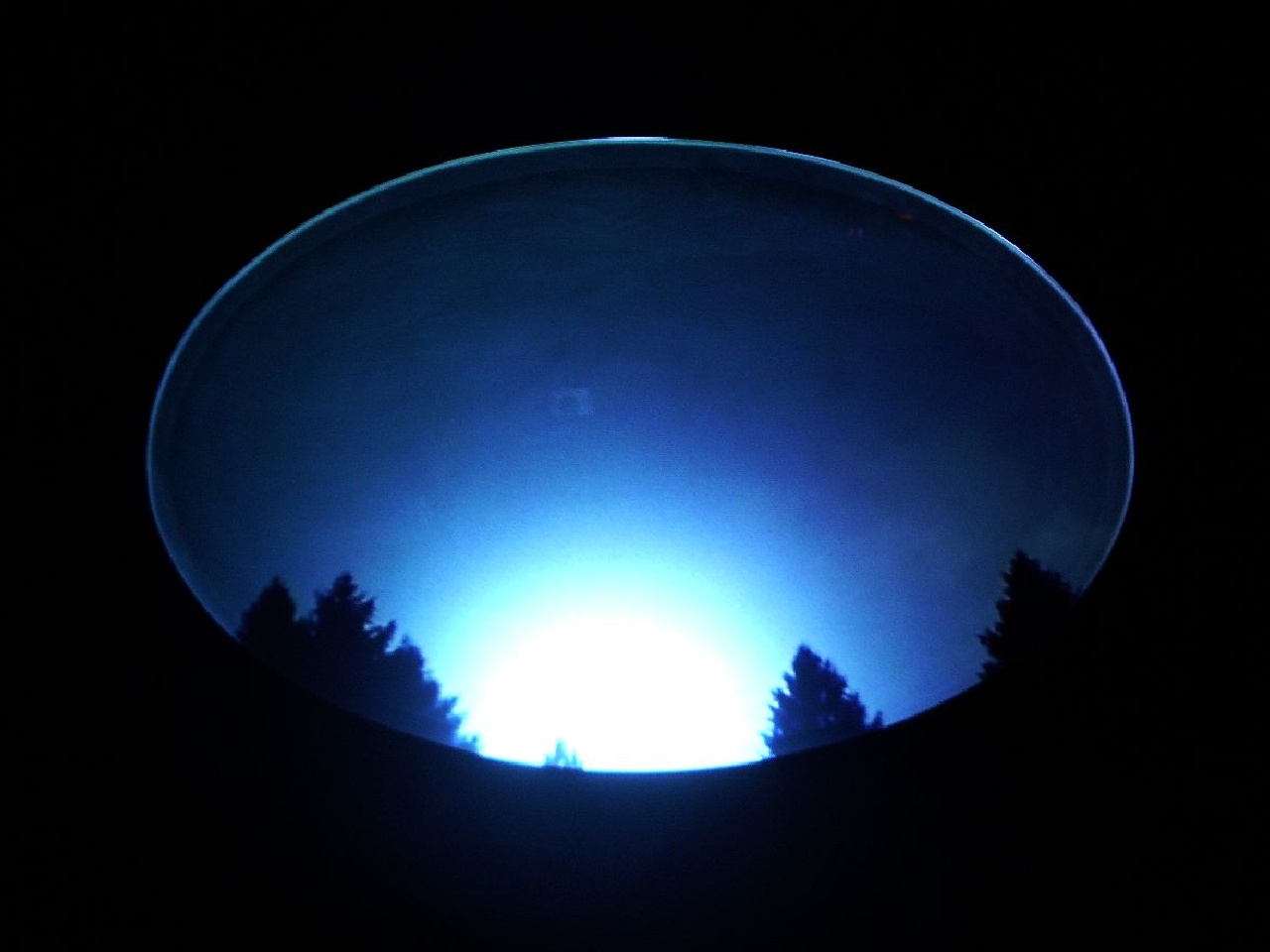
You can see the spooky disembodied ghost of my camera in this shot.
There was lots more to see in the Hall too. Even since the last time I'd been there (Primal Scream touring "XTRMNTR" in about 2003) the public interior had undergone considerable change, most noticeably in the foyer between the auditorium and the bar, where the large Victorian skylight - shrouded by thick felt for over 50 years - had finally been renovated and uncovered, allowing natural light to flood into the once-murky lobby. (Possibly too much so for the benefit of the portrait of Nick Cave hanging above the stairs, now adrift amid acres of stark white space and thereby afflicted with an even more unhealthy pallor than usual.)
In a nice touch for the open day, the main dressing rooms backstage had been decorated to simulate occupation by some hardcore rock'n'roll artistes of the sort who regularly frequent the venue. As I carried on deeper into the bowels of the building, it felt a bit like descending through the decks of a cruise ship - if the upper levels of the venue were the glamorous ballrooms and restaurants and bars for elite passengers, and the comfortably-appointed main dressing rooms the standard-class accommodation, then further below was unquestionably steerage and crew quarters. Around the entrance to the vaults were clustered several bare, functional cloakrooms and communal changing areas, all leading off from the "green room", a spartan open cafeteria-type area cheaply furnished with the plainest of tables and chairs.

Green rooms are rarely actually green.
There was a considerable queue for the guided tours of the vaults themselves (you weren't allowed in without a guide), and as far as I could gather they were just tunnels with some racks of costumes in them, so I didn't bother hanging around the rather bleak surroundings waiting for one. (I tend to get irritated by the pace of guided tours, which always seem to either crawl along while someone tells the story of every last brick, or race past things that I wanted to linger on. It's also a pain having hordes of people milling about when you're trying to take pictures.) Instead I headed back up to enjoy the serene and peaceful surroundings of the foyer one more time before getting on with the rest of my itinerary.
For no particular reason, as I stood at the top of the foyer stairs I was suddenly struck by the similarity of the view in a mirror across the corridor to the exhibits in the auditorium, as the character of the light gave it the appearance of a window looking out onto a foreign scene. As I got my camera out, a teenage couple stopped on the landing in front of it and, oblivious to the few people nearby in the manner of those in love, started smooching. I tutted to myself in a curmudgeonly way, waiting for them to get out of my shot, and then suddenly realised that they were actually doing a splendid job of reinforcing and illustrating the theme, so I clicked the shutter anyway and captured their youthful embrace in silhouette. If you feel a touch uncomfortable with such borderline-voyeurism, look away now.

As I took the shot, I felt an unfamiliar glow I took to be human warmth.
Stepping back out into the sunlight, it was late lunchtime and I was feeling a bit hungry from all this trekking around in the heat, so I cut down a narrow street past an eye-catching block of flats modelled after the prow of a ship (nautical echoes are never far away in Bristol) and headed towards an intermittently excellent fish-and-chip shop of my acquaintance. I bought what turned out to be the worst bag of chips I've ever had there - floppy, pale, undercooked things glistening damply with unfried oil, most of which ended up in a nearby bin - and struck out for what my watch was indicating would have to be the last major calling-point of the trip, namely the Red Lodge and Wigwam of the Bristol Savages.
As the map would have it, this entailed walking up the daunting climb of Christmas Steps, which give our feature its timely hook. The steps themselves held a cultural diversion too, in the form of a shop whose windows were full of curious artefacts bearing many proud icons of modern British heritage. Aimed at a market I can't begin to identify, the shop sold, almost exclusively, fake banknotes illustrated with characters as diverse as the Princess of Wales, Bobby Moore, Basil Fawlty, John Lennon, Rodney Trotter and Michael Caine (depicted in his role as Lt. Gonville Bromhead in Zulu), as well as another appearance from Concorde. And if you're anything like me, as you gaze at this panoply of celebrity you can't help but wonder what the people who buy fake Princess Diana banknotes actually do with them. Frame them as a talking-point for the sitting room? Pass them down as family heirlooms? Use them in black-magic rituals? Try to pass them off to naive Polish bar staff? Or what?

Still more examples of counterfeit currency can be seen here.
But anyway. Built sometime around 1580, the Red Lodge is one of the city's least-heralded attractions. I'd walked past it countless times without ever realising there was anything of note there, and even when you're actively looking for it it's not easy to spot. According to the leaflet they lend you when you visit ("PLEASE LEAVE THIS INFORMATION SHEET IN THE TRAY BY THE DOOR TO THE GARDEN"), it contains "the only 16th-century panelled room, complete with its plasterwork ceiling and stone chimneypiece, to survive in the city", alongside other spectacular and intricate period features. It's certainly beautiful inside, all burnished oak and graceful scale and unforced grandeur, despite the Lodge actually being just a modestly-sized townhouse rather than a sprawling country mansion.
On this particular day (and, for all I know, every other day of the year too), though, the classic Middle Ages England vibe was somewhat disturbed by, well, things like this:

A very different kind of electric chair.
Shortly after the end of World War 1, the Red Lodge had passed into the hands of a slightly eccentric group of artists called the Bristol Savages, who purchased it for use as a studio and gallery for their work. To hold their weekly meetings, they constructed the "Wigwam", a large outbuilding modelled after a tithe barn. (The group took their Native American theme very seriously, denoting themselves a "tribe" and wearing different-coloured feathers in their lapels depending on their membership category - red for artists, blue for performers and green for lay members.) Ever since, the Lodge and Wigwam have played host to exhibitions of the Savages' art, and every room was now occupied by installations of various kinds.
One room, for example, contained an incredibly ornate but extremely tiny four-poster bed (no more than 4ft long), beside an easel with an unexplained painting of what appeared to be a man in drag balancing a stuffed-looking cat on his lap. Others held rocks tethered to the ground with rope, and wireframe balsa-wood models of the 1960s office blocks visible from the Lodge's windows, in another recurrence of the day's motif of adjacent worlds.

Click for a close-up of the slightly disturbing picture.
Downstairs was chiefly given over to a collection of lightbulbs on long metal stalks, which bobbed and swayed to and fro to a baffling lack of effect, especially as the room was already brightly lit by the unfettered sunshine. (In darkness, illuminating different parts of the room as they moved, one would imagine the lights would have been a lot more interesting. But I suppose people would have tripped over and broken things expensively.)
Outside through the garden, the Wigwam itself was much more imposing, a cluttered but still stately space full of paintings and sculptures and objects (and people). Despite the absence of any warning signs, though, I was very sternly reprimanded by a steward for taking pictures, and only got a couple off before slinking away in disgrace back into the garden, with its hedge maze and little trapped Victorian child, her tragic plight cruelly ignored by the crowds of visitors like an elephant in the room or the bruises on a battered wife.
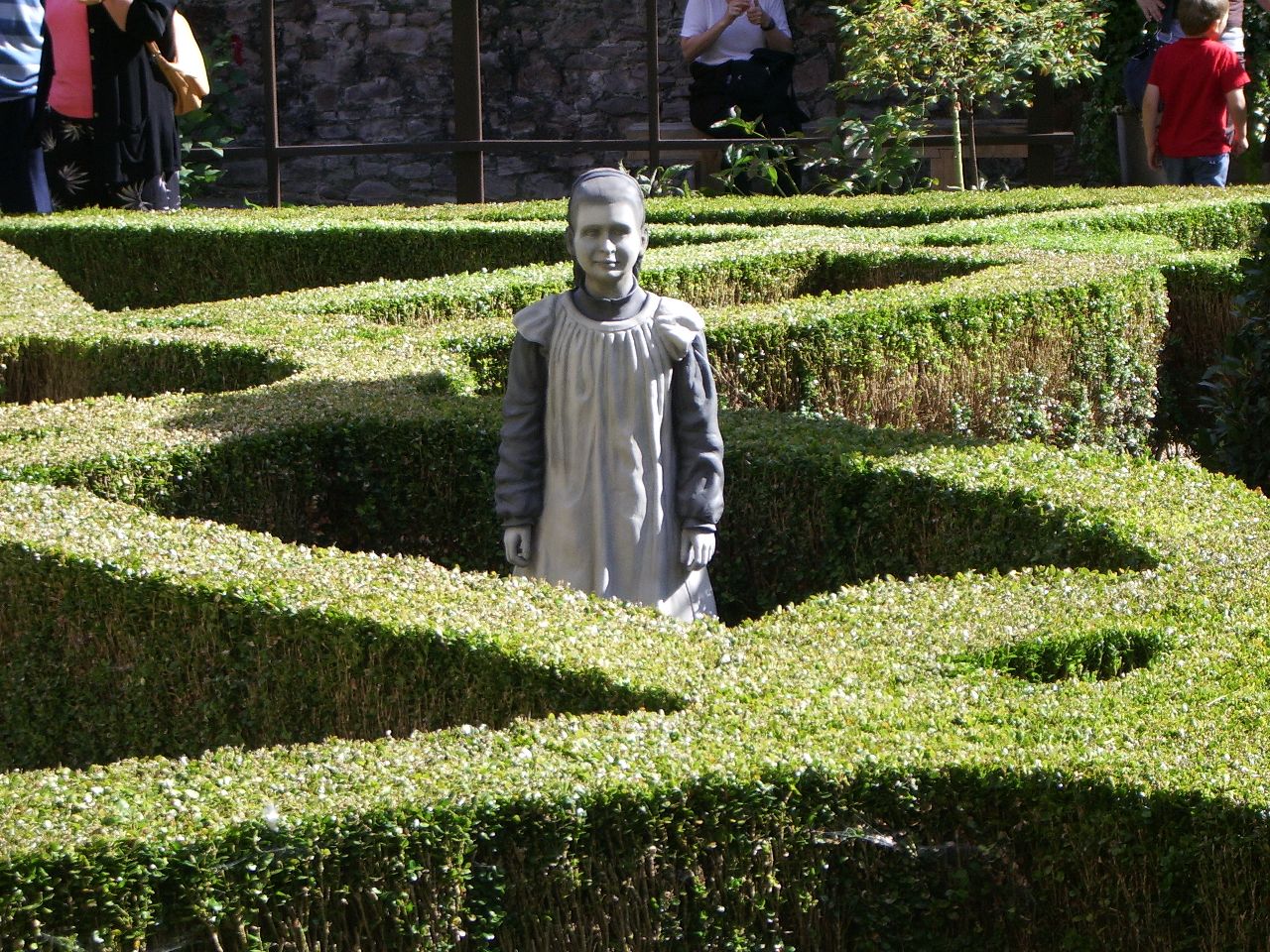
"Help me, you bastards. I've been stuck here so long I've
literally turned to stone."
And that was almost it for my cultural adventure in Bristol. Since I was nearby anyway and wanted to go to Forbidden Planet before it closed, I popped my head through the door of the University of Bristol, one of Britain's original "redbrick" universities and one whose very high proportion (33%) of private-school students often sees it decried as one of the most elitist in the country, an image not helped by it currently being Euan Blair's alma mater. Though only just over 100 years old, the main university building is perhaps the most impressive piece of architecture in the city, and the marble lobby alone is intimidatingly vast. Indeed, it was the daunting scale of everything that stopped me from spending more than a couple of minutes there, reasoning that I only had time for such a cursory exploration that it'd be doing it a disservice. The university will just have to wait for Doors Open Day 2007.
And with that, having stopped in FP to read the first issue of K Gillen's "Phonogram" on the shelf (I never buy comics until the trade collection comes out), it was time to head for home. On the way to the train station I came to the towering spire of St Mary Redcliffe again, now open for business, and had time to go in for a quick look. Despite being neglected and grimy, the exterior of the church is still quite an awe-inspiring sight, and as a working place of daily worship rather than a dishevelled tourist attraction, the inside was far more tranquil and attractive than the cathedral had been. If religious buildings are your thing and you happen to be in Bristol, this, rather than its high-profile sister, should be your destination.
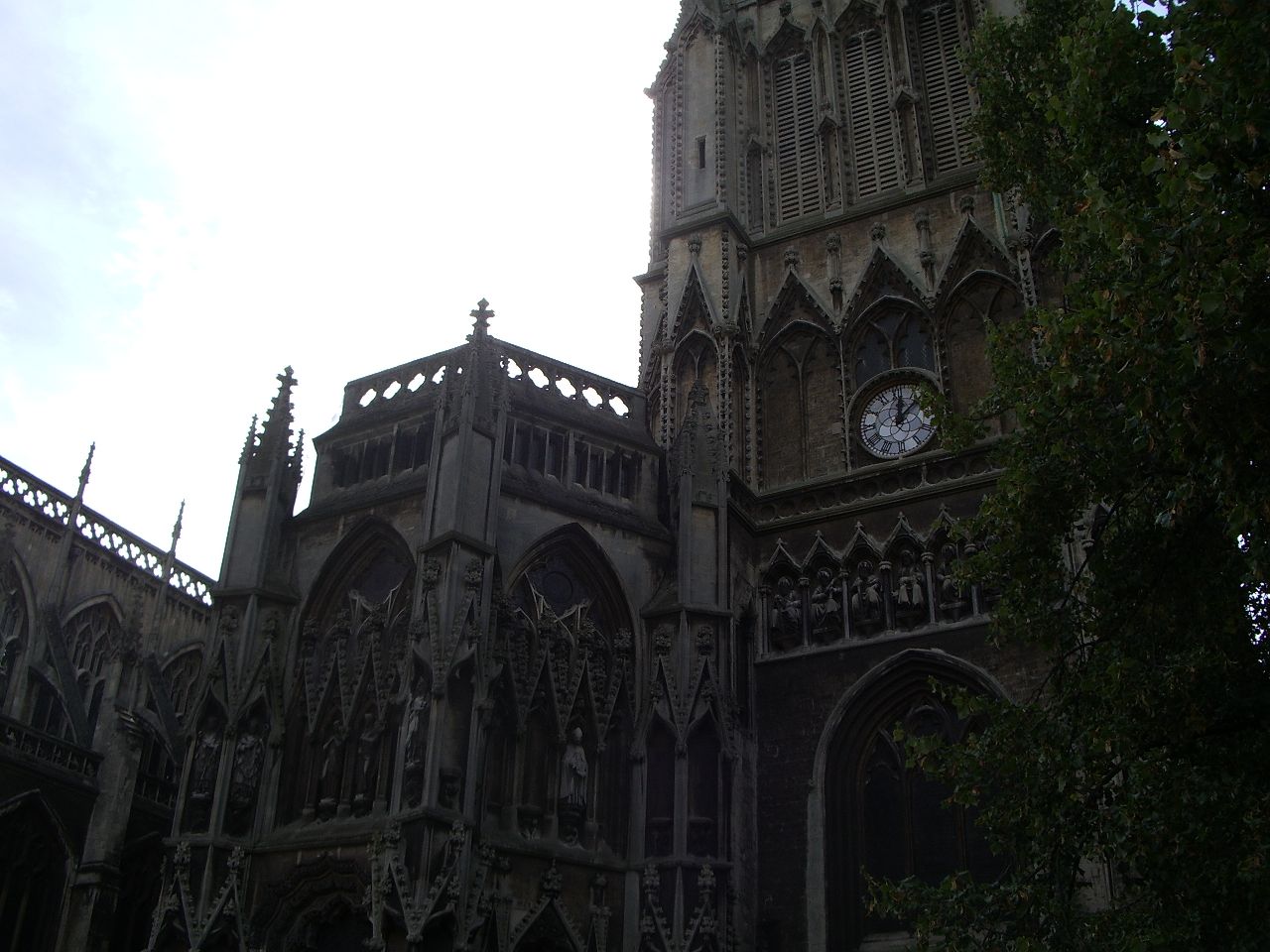
Even if you don't believe in God, you can be scared of his fanclub.
Another regrettable stroll past the bombsite around Temple Meads saw me back on the train, though not without encountering one final window between worlds, in the form of a building opposite the church completely demolished save for its facade. (Though I daresay you could argue that the derelict ruins across the station's platforms were really the last example.) I'd certainly had a surprising and thought-provoking day, but did I like Bristol any better at the end of it? It's hard to say. It's still an ugly, unwelcoming place, but the pockets of wonder well-hidden among its sullen streets offer a glimmer of hope that friendly souls always lurk somewhere. And at Christmas, that's probably as much as you can ask for.
|

